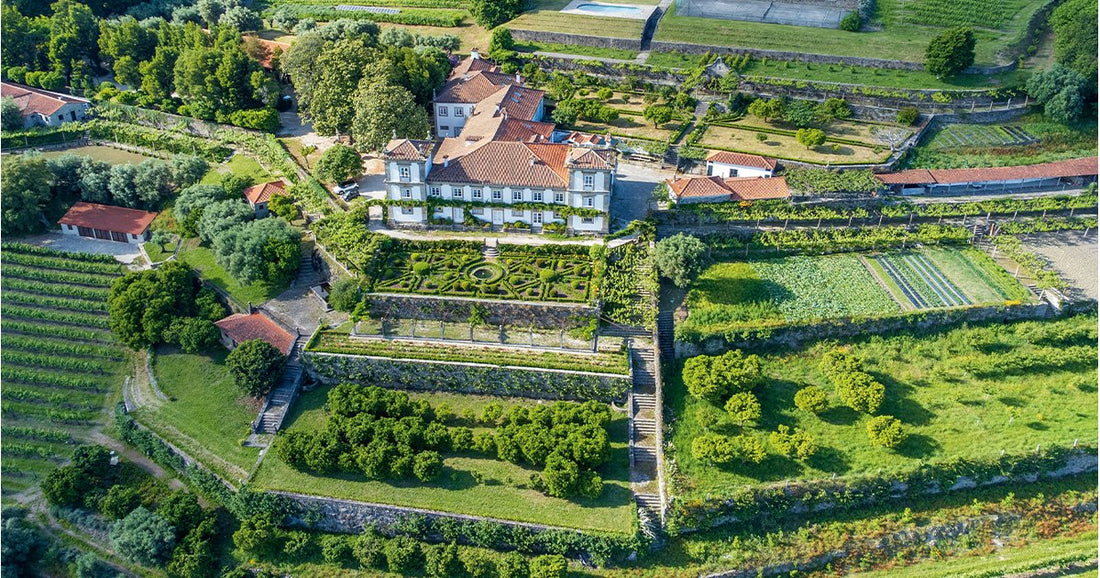
Ribeira Lima
Share
Architecture and culture: a visit to the mansions of Ponte de Lima

Among all the possessions that inspire ostentation, homes are par excellence a visual manifestation of a higher or lower quality of life. Homes have always been places of shelter, in their simplest and most unassuming sense, but in the scale of human ambitions, they are also places of beauty, comfort, and symbols of grandeur. There is also an emotional value associated with homes, which are both home and stage for varied experiences and life narratives, establishing themselves as true keepsakes of memories.
Mansions, or palaces, are the original homes of noble families. They are also commonly associated with older residences that reflect the luxury and comfort of a particular era. They are, in fact, emblematic buildings, architecturally rich, and undoubtedly historically important. And, above all, they are heritage. Heritage is important to preserve and care for, because it represents the identity of a region, the voice of several generations, and the cultural heritage of centuries of history.
In Portugal, the construction of mansions began primarily from the 15th century onward, a particularly prosperous period when the country assumed the status of an empire. These mansions were home to nobles and families belonging to the traditional elite of a region or city. Alongside the mansions, many other stately homes and ancient houses worthy of appreciation proliferated from north to south. In Ponte de Lima, this phenomenon gained particular prominence, as Portugal's oldest town boasts the largest collection of Baroque mansions in the country, with civil architecture gaining particular splendor and dimension during the 17th and 18th centuries. Today, Ponte de Lima is the cradle of an ancient historical legacy, and it is worth revisiting the etymology of the word "manor," as it originates from the Latin " solum ," meaning soil or earth. There is, therefore, the idea that a manor corresponds to the place where a noble family took root and remained for several centuries, continuing its lineage and maintaining the property under the same family epithet, which still happens with some historic houses in the Lima River valley.

And if these houses are indeed worthy of contemplation and preservation, it is also true that they are worthy of awakening the most lyrical thoughts and curiosity. After all, how many lives, tears, or laughter have touched those walls? Perhaps that is why so many writers have been inspired by walks along Ribeira Lima, from Guerra Junqueiro to Ramalho Ortigão, who defined it as "the most vibrantly alive and joyful, most luminous, and most melodious portion of sky and soil."
That's our invitation. Visit and be inspired. In Ponte de Lima, the landscape invites you to enjoy the architectural, historical, cultural, and intangible heritage, without forgetting the welcoming people and delicious delicacies. But delve deeper and allow yourself a unique opportunity—to visit and spend the night in one of the town's mansions. In Ponte de Lima, there is a wide variety of manor houses or old houses, farmhouses, or rustic homes that you can visit. Among them are the Casa de Abades, the Casa da Lage, the Casa do Outeiro, the Torre de Refóios, the Casa do Cruzeiro, the Casa das Torres, the Paço de Calheiros, and the Paço de Vitorino, among others.
Among some of the details that might whet your appetite for a visit and a stay, we highlight the Casa do Outeiro, which was looted during the French invasions and was subsequently rebuilt, preserving the noble spirit of a traditional Minho family; or the magnificent Paço de Calheiros, an eighteenth-century example of Portuguese civil architecture, which has remained in the family to this day and whose origins predate the founding of Portugal; or the Casa da Lage, a beautiful late-seventeenth-century manor house, exuberantly restored, with exquisite décor and a heated indoor pool. And there's also the Paço de Vitorino, a hotel reborn from the reconstruction of a sixteenth-century manor house, boasting a splendid garden dating back to the Baroque era.
But there's certainly no shortage of options, because in various corners of Ponte de Lima it's easy to stumble upon one of these seals of history, true homes of refinement, quality and comfort, but above all, of old memories... and new ones waiting to be made by you.


T. Ana Monteiro · F. All Rights Reserved
